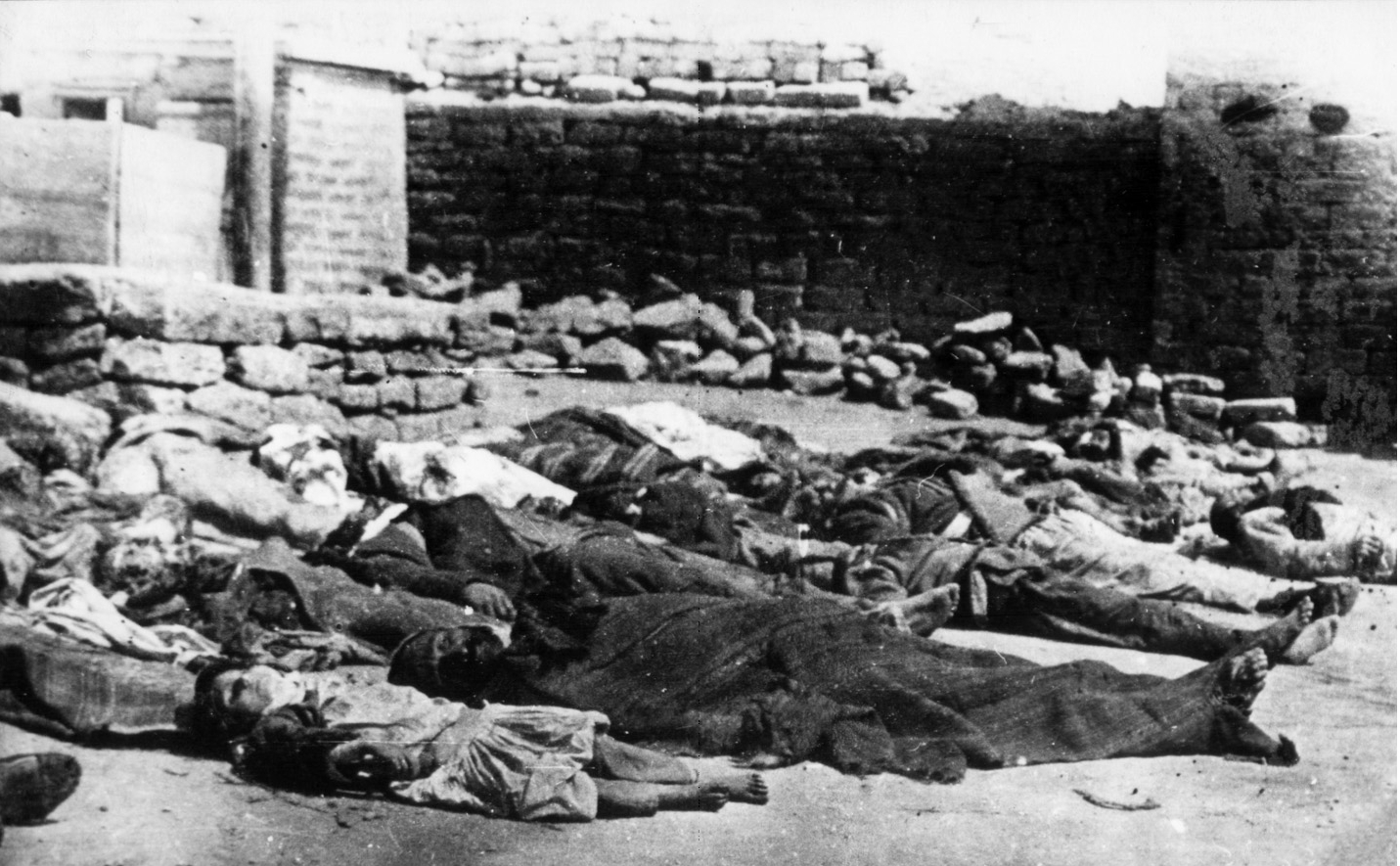Azerbaijanis around the world are commemorating March 31 as the Day of Genocide of Azerbaijanis, which took place 105 years ago and is considered one of the most tragic pages in the country’s history.
In 1918, Armenians staged mass pogroms in different cities across Azerbaijan, which lasted for several days from March 30 to April 3 and targeted the Muslim-majority Azerbaijani population of the country.
As a result of mass ethnic cleansing, over 50,000 Azerbaijanis and other ethnic groups residing in Azerbaijan, including Jews and ethnic Germans, were slaughtered by the militants of the Armenian Revolutionary Federation, also known as the Dashnaktsutyun nationalist and socialist party, and with the support of the Bolsheviks revolutionaries. In addition, tens of thousands of Azerbaijanis went missing.
“Between March 30 and April 1, 1918, Tatars [Azerbaijanis, as they were sometimes called], were attacked,” Justin McCarthy, an American historian at the University of Louisville, wrote in his book Death and Exile: Ethnic cleansing of Ottoman Muslims, 1821-1922.
“Almost half of the Muslim population of Baku was forced to flee the city. In that period between 8,000 and 12,000 Muslims were killed in Baku alone.”
According to historians, the death toll of the genocide in Baku alone was significantly higher than the Srebrenica massacre that formed part of the 1995 Bosnian war in the Balkans.
The roots of this tragedy can be traced back in part to 1917 — the year when the Russian Empire collapsed and pushed Azerbaijan, which was once part of the empire, into political chaos. Bolsheviks, who ousted Russia’s Tsarist rule, openly supported politicians of Armenian origin by promoting them to various leadership positions in Azerbaijan.
Strong patronage and support by the Bolshevik rulers encouraged Armenians to start carrying out a plan to annihilate the population of Azerbaijan as part of the so-called operations against counter-revolutionary elements. Mass killings started in late March of 1918 in Baku and spilt over into other regions of Azerbaijan, including, amongst others, Shamakhi, Guba, Karabakh, Zangezur, Goycha, Nakhchivan, Salyan, and Lankaran. Civilians were brutally massacred, villages were burnt to ashes, and monuments were destroyed as part of a deliberate plan to rid the area of any cultural and historical evidence of Azerbaijani existence.
Firuz Kazimzadeh, an American professor at Yale University, says Armenians under the guise of Bolshevism tried to push out Muslims. As a result, they managed to annihilate tens of thousands of people in just a few days, Kazimzadeh records in his book titled “The Struggle for Transcaucasia, 1917-1921.”
“The truth is that the Armenians, under the guise of Bolshevism, rushed on the Muslims and massacred during a few frightful days more than 12,000 people, many of whom were old men, women, and children. The March events, as this episode became known in history, led to the emergence of a whole series of killings of Azerbaijanis. The atrocities continued throughout the week. Every Azerbaijani, whom Dashnak [Armenian nationalist forces] gangs could catch, was killed,” he writes.
Pogroms that took place in Guba are said to resemble a rehearsal of the Holocaust that took place decades later during World War II in Nazi Germany. Over 3,000 mountain Jews, who had been living in Azerbaijan’s Guba district for approximately 1,500 years, were massacred by Armenians after they refused to cooperate with the latter. The death toll in the Guba district reached almost 20,000, of which 16,000 were Azerbaijani Muslims.
A mass grave of the genocide victims from Guba was unearthed in 2007. Research conducted by the Institute of Archeology and Ethnography at the Azerbaijan National Academy of Sciences revealed that the grave contains more than 400 human corpses, including 50 children, 100 women, and the elderly. The Guba Genocide Memorial Complex was erected on the site in 2013.







 The number of evacuees from flooded areas in Kazakhstan has reached 97,852 people, including about 32,856 children since March 27.
The number of evacuees from flooded areas in Kazakhstan has reached 97,852 people, including about 32,856 children since March 27.
 The Islamic holy month of fasting, Ramadan comes to an end this week with the celebration of a joyous festival called Eid (meaning “festival” in Ar...
The Islamic holy month of fasting, Ramadan comes to an end this week with the celebration of a joyous festival called Eid (meaning “festival” in Ar...
 Iran's senior military leaders described the drone and missile attack on Israel on April 14 night as “successful".
Iran's senior military leaders described the drone and missile attack on Israel on April 14 night as “successful".
 Iranian President Ebrahim Raisi warned Israel that it would face a "real and extensive" response if it makes any "mistake" following Tehran’s missi...
Iranian President Ebrahim Raisi warned Israel that it would face a "real and extensive" response if it makes any "mistake" following Tehran’s missi...



